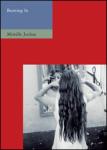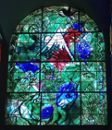AustLit
Latest Issues
AbstractHistoryArchive Description
Publication Details of Only Known VersionEarliest 2 Known Versions of
Works about this Work
-
The Silver Age of Fiction
2011
single work
criticism
— Appears in: Meanjin , Summer vol. 70 no. 4 2011; (p. 110-115)‘In human reckoning, Golden Ages are always already in the past. The Greek poet Hesiod, in Works and Days, posited Five Ages of Mankind: Golden, Silver, Bronze, Heroic and Iron (Ovid made do with four). Writing in the Romantic period, Thomas Love Peacock (author of such now almost forgotten novels as Nightmare Abbey, 1818) defined The Four Ages of Poetry (1820) in which their order was Iron, Gold, Silver and Bronze. To the Golden Age, in their archaic greatness, belonged Homer and Aeschylus. The Silver Age, following it, was less original, but nevertheless 'the age of civilised life'. The main issue of Peacock's thesis was the famous response that he elicited from his friend Shelley - Defence of Poetry (1821).’ (Publication abstract)
-
Books Fiction
2008
single work
review
— Appears in: The Courier-Mail , 26 - 27 January 2008; (p. 18)
— Review of Burning In 2007 single work novel -
The Unthinkable
2008
single work
review
— Appears in: Australian Book Review , February no. 298 2008; (p. 19)
— Review of Burning In 2007 single work novel -
The Bone of My Side, Alive
2007
single work
autobiography
— Appears in: Heat , no. 15 (New Series) 2007; (p. 61-80) -
Fiction
2007
single work
review
— Appears in: The Age , 15 December 2007; (p. 34)
— Review of Burning In 2007 single work novel
-
Journey of Loss, Memory and Place
2007
single work
review
— Appears in: The Canberra Times , 29 September 2007; (p. 14)
— Review of Burning In 2007 single work novel -
In Short : Fiction
2007
single work
review
— Appears in: The Sydney Morning Herald , 29-30 September 2007; (p. 34)
— Review of Burning In 2007 single work novel -
Superb Snapshot of Grief By a Sublime Writer
2007
single work
review
— Appears in: The Sun-Herald , 9 December 2007; (p. 67)
— Review of Burning In 2007 single work novel -
Fiction
2007
single work
review
— Appears in: The Age , 15 December 2007; (p. 34)
— Review of Burning In 2007 single work novel -
The Unthinkable
2008
single work
review
— Appears in: Australian Book Review , February no. 298 2008; (p. 19)
— Review of Burning In 2007 single work novel -
The Bone of My Side, Alive
2007
single work
autobiography
— Appears in: Heat , no. 15 (New Series) 2007; (p. 61-80) -
The Silver Age of Fiction
2011
single work
criticism
— Appears in: Meanjin , Summer vol. 70 no. 4 2011; (p. 110-115)‘In human reckoning, Golden Ages are always already in the past. The Greek poet Hesiod, in Works and Days, posited Five Ages of Mankind: Golden, Silver, Bronze, Heroic and Iron (Ovid made do with four). Writing in the Romantic period, Thomas Love Peacock (author of such now almost forgotten novels as Nightmare Abbey, 1818) defined The Four Ages of Poetry (1820) in which their order was Iron, Gold, Silver and Bronze. To the Golden Age, in their archaic greatness, belonged Homer and Aeschylus. The Silver Age, following it, was less original, but nevertheless 'the age of civilised life'. The main issue of Peacock's thesis was the famous response that he elicited from his friend Shelley - Defence of Poetry (1821).’ (Publication abstract)
Awards
- 2008 longlisted Australia-Asia Literary Award
- 2008 shortlisted Prime Minister's Literary Awards — Fiction
- 2008 shortlisted The Age Book of the Year Award — Fiction Prize
- 2008 shortlisted Kibble Literary Awards — Nita Kibble Literary Award
- 2008 highly commended Barbara Jefferis Award
- Sydney, New South Wales,
-
New York (City),
New York (State),
cUnited States of America (USA),cAmericas,
-
Berlin,
cGermany,cWestern Europe, Europe,





